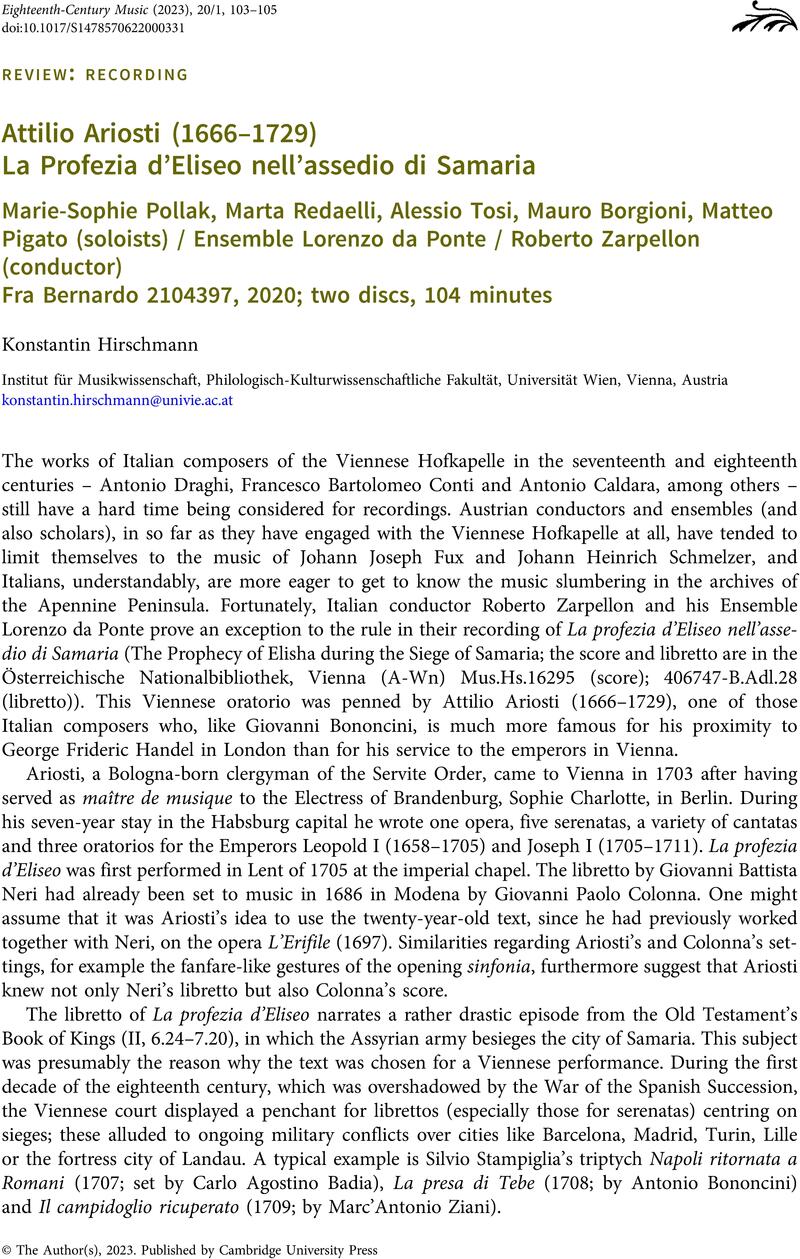No CrossRef data available.
Article contents
Attilio Ariosti (1666–1729) La Profezia d'Eliseo nell'assedio di Samaria Marie-Sophie Pollak, Marta Redaelli, Alessio Tosi, Mauro Borgioni, Matteo Pigato (soloists) / Ensemble Lorenzo da Ponte / Roberto Zarpellon (conductor) Fra Bernardo 2104397, 2020; two discs, 104 minutes
Review products
Attilio Ariosti (1666–1729) La Profezia d'Eliseo nell'assedio di Samaria Marie-Sophie Pollak, Marta Redaelli, Alessio Tosi, Mauro Borgioni, Matteo Pigato (soloists) / Ensemble Lorenzo da Ponte / Roberto Zarpellon (conductor) Fra Bernardo 2104397, 2020; two discs, 104 minutes
Published online by Cambridge University Press: 08 February 2023
Abstract
An abstract is not available for this content so a preview has been provided. Please use the Get access link above for information on how to access this content.

- Type
- Review: Recording
- Information
- Copyright
- Copyright © The Author(s), 2023. Published by Cambridge University Press



